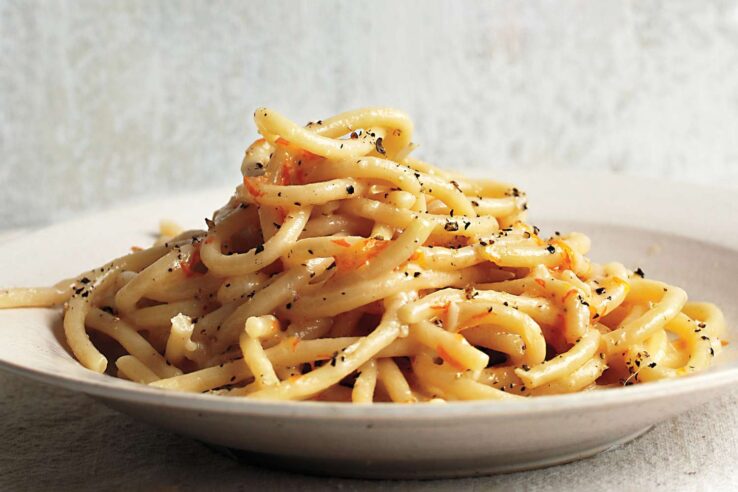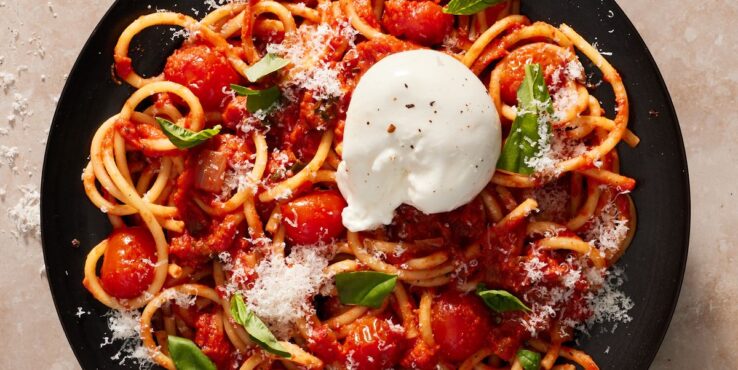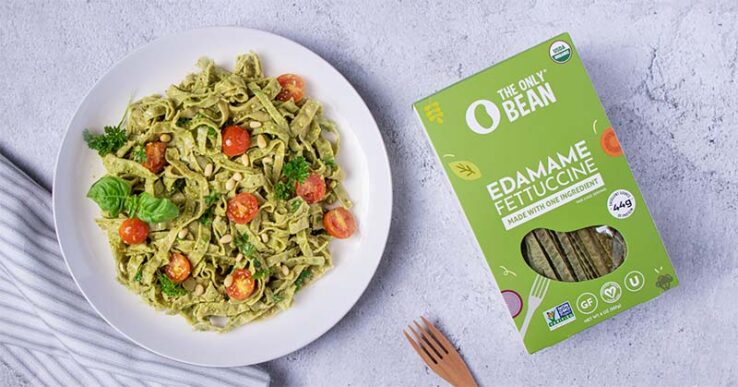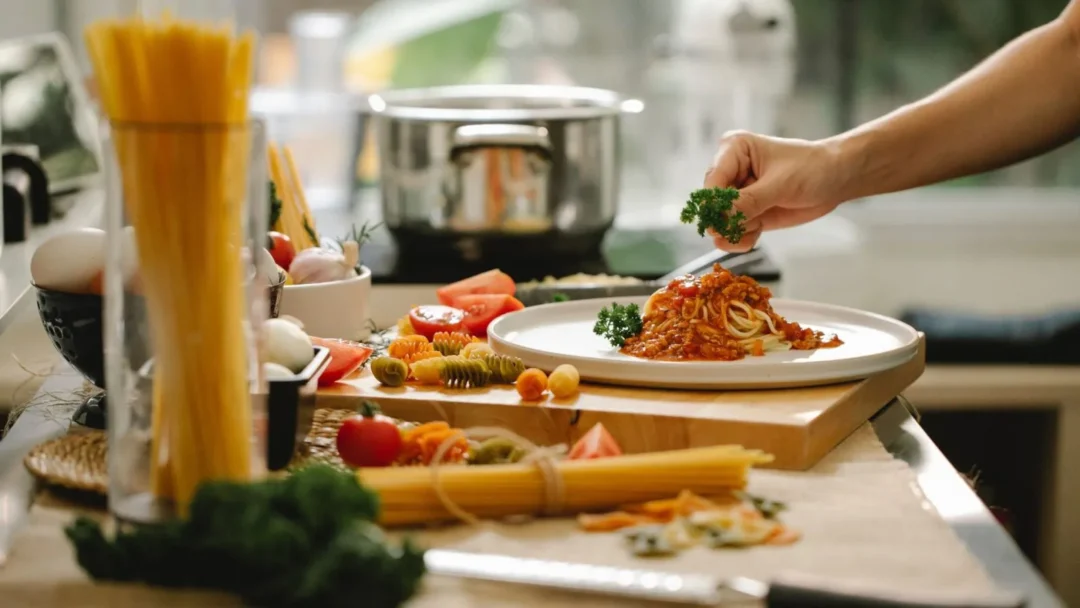Pasta delish have long been a beloved institution in the culinary world, providing patrons with a delightful selection of Italy’s most cherished dishes. A staple in the world of Italian cuisine, these delish offer a unique opportunity to taste a variety of homemade noodles, sauces, and other mouthwatering creations.
The Early Beginnings: Tracing the Roots

Source: budgetbytes.com
While many associate the inception of pasta with Italy, its true origins date back to ancient civilizations. Noodles are believed to have been first developed in China around 2000 BC. However, it wasn’t until the 13th century that these noodles made their way to Italy. Over time, the Italian people embraced these dishes and began to create their unique variations.
The first pasta deli emerged in the early 19th century in Italy, serving as modest shops specializing in the sale of fresh noodles and sauces. These early establishments were often family-owned and operated, with recipes passed down through generations. As the popularity of these dishes grew, so did the number of these shops, eventually becoming a fixture in Italian communities across the globe.
Italian Immigration and the Spread of Pasta Delish
The late 19th and early 20th centuries saw a significant wave of Italian immigration to countries like the United States, Argentina, and Australia. With this influx of Italian immigrants came the introduction of their rich culinary traditions. The newcomers opened up small shops, sharing their love for homemade noodles with their new communities.
These shops quickly gained popularity among both Italian and non-Italian residents, becoming a familiar sight in cities such as New York, Buenos Aires, and Sydney. The success of these establishments led to the gradual expansion of their menus to include a broader range of Italian dishes, including antipasti, paninis, and desserts.
The Influence of Regional Pasta Dishes Menus

Source: marthastewart.com
Italy’s diverse regions have each contributed unique pasta dishes to the global culinary landscape. From the creamy carbonara of Lazio to the seafood-infused linguine of the Amalfi Coast, regional specialties have played a significant role in shaping the offerings of pasta delish around the world.
As these establishments became more prevalent, they began incorporating regional recipes into their menus. This evolution not only provided patrons with a broader range of dishes to choose from but also allowed owners to pay homage to their own heritage and the rich culinary history of Italy.
The Evolution of Pasta-Making Techniques in Delish
Over the years, pasta-making techniques have evolved in response to changing tastes and advancements in technology. In the early days, noodles were made exclusively by hand using simple tools like rolling pins and pasta cutters. However, as demand grew, so did the need for more efficient production methods.
The introduction of electric pasta machines in the early 20th century revolutionized the industry, allowing shop owners to produce larger quantities of noodles in a fraction of the time. Despite the efficiency of these machines, many establishments still choose to incorporate traditional hand-made techniques, believing that the artistry and attention to detail result in a superior product.
The Rise of Artisanal Pasta and Handmade Delicacies
In recent years, there has been a resurgence of interest in artisanal, handcrafted pasta. This trend can be attributed to a growing appreciation for quality ingredients, traditional methods, and a desire for more authentic dining experiences.
Many modern shops have embraced this movement, focusing on sourcing the finest ingredients and employing skilled artisans to create their noodles and sauces from scratch. This attention to detail has led to the creation of a new generation of gourmet pasta delish, offering patrons an elevated dining experience that celebrates the art of pasta making.
The Impact of the Fast Food Revolution
The fast food revolution of the mid-20th century brought about significant changes in the culinary landscape, with a focus on convenience and efficiency. As a result, many traditional delish faced challenges as they competed with the growing popularity of quick-service restaurants.
In response to this shift, some delish adapted by offering fast, affordable options that catered to the needs of their increasingly time-pressed customers. This new approach allowed these establishments to retain their relevance in the evolving food industry, while still providing a taste of Italy’s beloved culinary traditions.
The Revival of Traditional Pasta Delish and the Slow Food Movement

Source: delish.com
In recent years, there has been a growing appreciation for the slow food movement, which emphasizes the importance of quality ingredients, sustainable practices, and traditional culinary techniques. This shift in consumer preferences has led to a renewed interest in traditional shops, with many people seeking out establishments that prioritize authenticity and craftsmanship over convenience.
The resurgence of these traditional shops has created a unique opportunity for a new generation of entrepreneurs to continue the legacy of their ancestors, preserving the time-honored techniques and recipes that have been passed down through generations.
Online Ordering and Delivery Services
With the advent of technology and the ever-growing demand for convenience, pasta delish have had to adapt to the digital age. Many establishments now offer online ordering and delivery services, making it easier than ever for customers to enjoy their favorite Italian dishes from the comfort of their own homes.
This shift towards digital services has not only expanded the reach of pasta delish but also opened up new opportunities for growth, as delish can now cater to a broader customer base without the constraints of a physical location.
Innovations in Pasta Deli Offerings: Gluten-Free, Vegan, and More

Source: vegoutmag.com
In recent years, there has been a growing demand for dietary-friendly pasta dishes, catering to those with food allergies, intolerances, or specific lifestyle choices. In response to this demand, many pasta delish have expanded their menus to include gluten-free, vegan, and other alternative options.
By incorporating these new offerings, pasta delish have not only made their cuisine more accessible to a wider audience but have also demonstrated their commitment to innovation and adaptability in an ever-changing culinary landscape.
Conclusion
From its humble beginnings as a small, local shop to the modern-day kitchens dedicated solely to pasta delicacies, the history of delish is truly remarkable. The pastry chefs of today are able to create delicious dishes from all around the globe thanks to the hard work and dedication that has gone into perfecting this art form over centuries. We hope this article has given you an insight into how far we have come in our culinary journey with regard to pasta delish and inspired you to go out and explore one for yourself!




